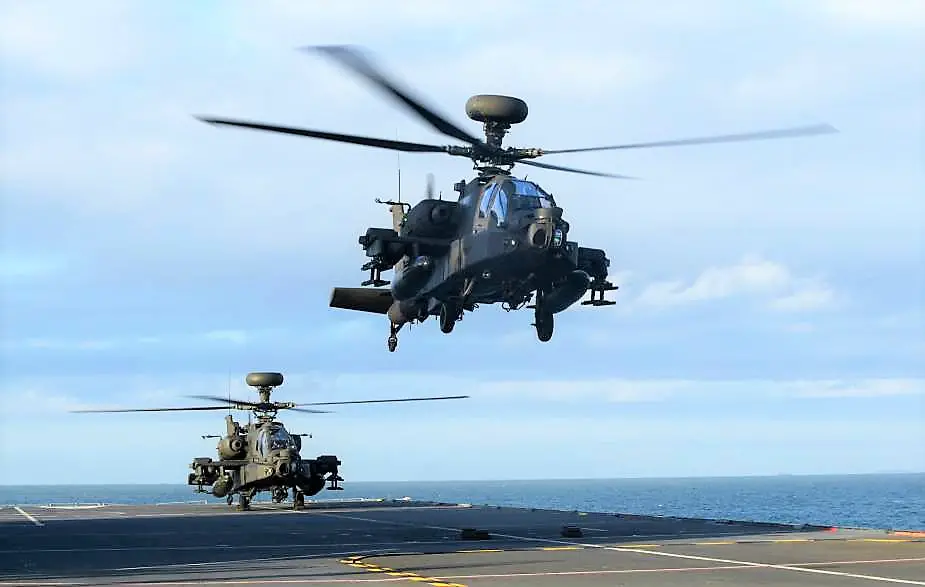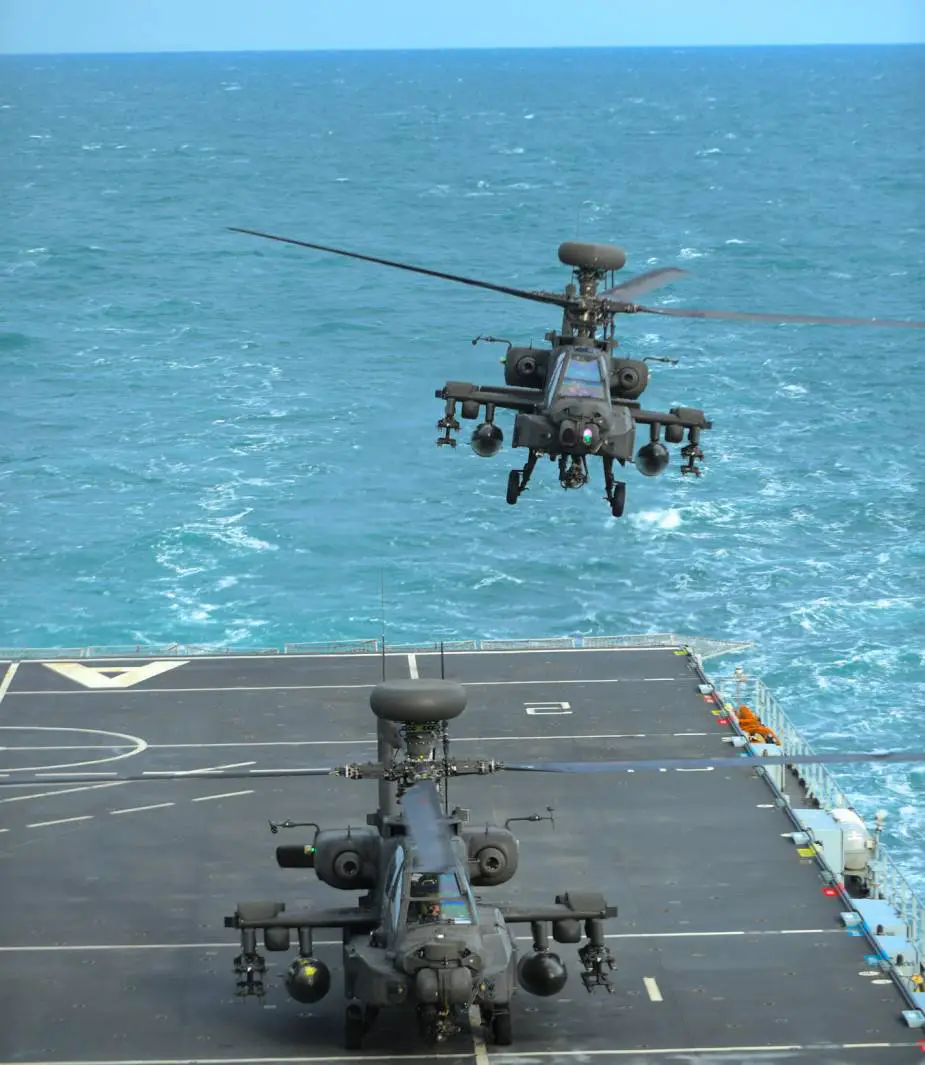Breaking news
UK Army AH-64 Apaches of 656 Squadron train to operate from ships.
British soldiers who fly and maintain the Army’s Apache Mk.1 attack helicopters have taken to the high seas to prove their readiness to fly strike missions off ships, the British Army reports. The Apache Mk 1 attacks helicopters of 656 Squadron, 4 Regiment Army Air Corps set sail on RFA Argus and face the challenges of choppy seas, wet and salty air, and confined spaces onboard the ship.
Follow Air Recognition on Google News at this link
 AH-64 Mk.1 Apaches of 656 Squadron, 4 Regiment Army Air Corps, take off from RFA Argus (Picture source: British Army)
AH-64 Mk.1 Apaches of 656 Squadron, 4 Regiment Army Air Corps, take off from RFA Argus (Picture source: British Army)
656 Sqn, based at Wattisham Flying Station in Suffolk, specialises in operating the Apache in maritime and extreme cold weather conditions and is kept at very high readiness to deploy in support of the Royal Navy and Royal Marines. The purpose of the five-week-long Exercise Chinthe Drift was to expose pilots, groundcrew and engineers to the different demands of working on a ship afloat in the Atlantic Ocean.
Pilots new to the squadron qualified in landings and take-offs from RFA Argus’ flight deck; groundcrew learnt the challenges of handling Apaches on a deck also occupied by Merlin support helicopters from the Commando Helicopter Force; and Royal Electrical and Mechanical Engineers aircraft and avionics technicians performed complex repairs and maintenance in a cramped hangar.
Apache pilot Captain ‘H’ said: “Having the opportunity to operate Apache in the maritime environment is a unique challenge, not only in terms of aircrew skill but also the complexity of maintaining, moving and readying the aircraft on a ship. It demonstrates the versatility of the Apache and the Squadron, particularly in an environment few would associate with the Army Air Corps; I certainly did not anticipate operating an attack helicopter from the deck of a moving ship in the dark when I started my Army career.”
REME aircraft engineering officer Captain Ed Mercer said operating on ship added “a significant burden” to routine work to maintain the aircraft: “With the Apache being especially sensitive to corrosion and operating in a salt-laden atmosphere, the brunt of the technicians’ time was taken washing and inspecting each aircraft,” he said. “Engine and main-rotor blade changes were further complicated onboard; watching these large components swing on the crane during a choppy sea state was of some concern!”
Subject to any unscheduled operational deployments, the training is likely to be the last time the Apache Mk 1 operates at sea as 4 Regt AAC converts to the new and vastly more capable AH-64E Apache.
Captain ‘A’, the squadron’s arctic and maritime operations officer, described the training as “essential to maintaining a credible maritime presence” until the Apache Mk 1 is withdrawn from service in 2024.
 AH-64 Mk.1 Apaches of 656 Squadron, 4 Regiment Army Air Corps, operating from RFA Argus (Picture source: British Army)
AH-64 Mk.1 Apaches of 656 Squadron, 4 Regiment Army Air Corps, operating from RFA Argus (Picture source: British Army)



















